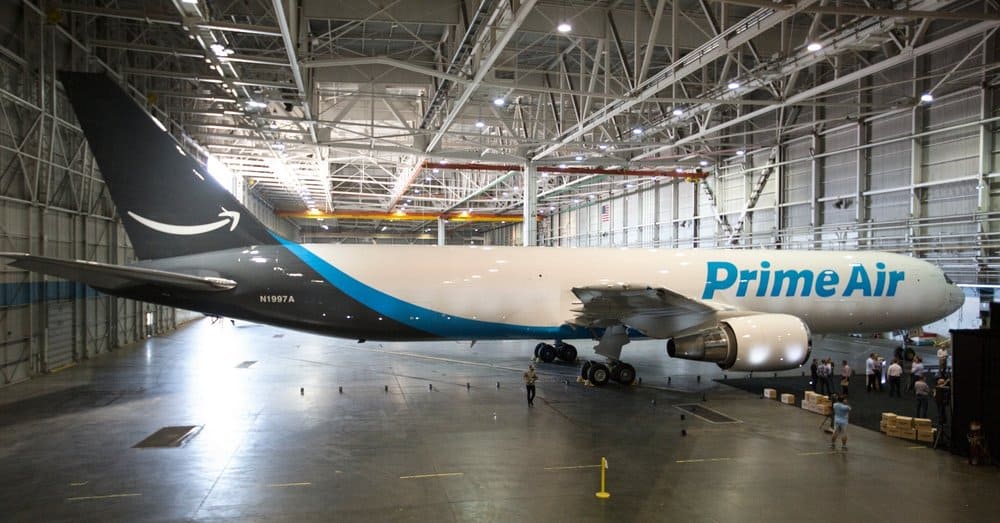
The e-commerce truck has left the dock, and it appears that those shippers and carriers who are not ready and loaded to adapt to the trend may get left behind. More evidence of the impact Amazon is having on the e-commerce retail market has emerged in recent months, and now a growing trend towards “drop shipping” is further altering the freight marketplace.
“E-commerce brings challenges, it certainly brings great opportunities,” UPS CEO David Abney told analysts in the company’s fourth quarter earnings call. “If this quarter taught us anything, we’ve got to quicken the pace.”
According to the company’s earnings report, 55% of deliveries in the fourth quarter were made to residential customers – 63% of deliveries during the busy month of December.
The 2016 holiday shopping season saw 20% higher e-commerce sales than 2015, reports Slice Intelligence, which tracks retailer sales. Amazon accounted for 38% of those sales, the group said.
The home stretch of holiday sales saw Amazon’s slice of the pie increase even more, with 44% of all e-commerce sales from Dec. 15, 2016 through Dec. 25, 2016, coming from Amazon.
Amazons has become such a dominant force in retail that competitors such as Walmart, which trails Amazon in online sales ($14 billion to Amazon’s $64 billion) are now shifting strategies to become more competitive. Since 2015, the retailer has been testing ShippingPass, which charged customers a fee for two-day shipping. This week, Walmart announced it was killing that program and instead would offer free two-day shipping on over 2 million items when customers spend at least $35. The change is part of a strategy that saw the company purchase start-up Jet.com last year. Jet’s founder was Marc Lore, now president and CEO of Walmart U.S. eCommerce.
“In this day and age, two-day shipping is really just table stakes,” Lore told CNBC. “We don’t think it’s necessary to charge a membership [fee] for it.”
Amazon Prime members pay $99 for free shipping plus a host of other benefits.
As retailers adjust to Amazon’s success and the changing demands of consumers, freight supply chains are also being forced to change.
“As e-commerce grows, it will have a dramatic impact, not only on air cargo, but on other modes as well.”
“Amazon’s entire infrastructure network is geared for speed and in the case where strategic logistics partners are not up to the challenge, it’s beginning to provide transportation and logistics services itself,” John Larkin, managing director of transportation capital markets research for Stifel Capital Markets noted earlier this year. “Just in the past year or two, the company has rolled out its own trailer fleet, has developed an uber-like last mile delivery process named Flex, has received its license to operate as a non-vessel owning common carrier in the international container shipper market, has developed its own air parcel hubs with its own dedicated aircraft, has been at work developing its own truck brokerage operation, and recently revealed a plan to deliver packages by drone from airborne warehouses.”
In fact, Amazon announced this week that it is building a $1.5 billion air cargo hub at the Cincinnati/Northern Kentucky airport. The hub will employ 2,000 and house at least 40 cargo planes, which Amazon is leasing and operating under the Amazon Prime Air brand, the Wall Street Journal reported.
So now Amazon is not just competing with retailers, but it is beginning to become a threat to air and ground freight companies as well.
“As e-commerce grows, it will have a dramatic impact, not only on air cargo, but on other modes as well,” Charles Clowdis, managing director of transportation for HIS Economics, said during Logistic Management magazine’s 2017 Rate Outlook earlier this month.
Drop shipping is another trend that is altering the landscape. This is the concept that when a customer places an online order, the product is shipped directly from the shipper’s warehouse, not the buyer’s warehouse.
The Wall Street Journal recently reported on the trend, noting that it helps brick-and-mortar stores to offer additional products online and reduces overhead in warehouses.
Supply chain software firm SPS Commerce, the Journal reported, said 40% of those responding to a survey expect more businesses to offer drop shipping this year.
More drop shipping is likely to be a boon for less-than-truckload carriers and package delivery businesses. But, it is also likely to place pressure in the supply chain to meet those shipping demands. An SPS survey referenced in the Wall Street Journal article found that one-half of logistics firms polled expect that within three years drop shipping will account for 25% of their business.
That will create upward pressure on rates. Larkin told attendees during Logistic Management magazine’s 2017 Rate Outlook that rates in the less-than-truckload segment should rise 2% this year and a potential capacity crunch could occur by 2018.
That shift will cause ripples throughout the freight business. As shippers and carriers react, an adjustment in the types of vehicles needed may change – from 53 ft. trailers to pups or even straight trucks perhaps – to meet shorter lengths of haul and faster delivery windows.
Because so much of this business is also on-demand, quick turnaround freight, spot rates will likely increase in areas around warehouses. According to Slice Intelligence, the average time to ship during the holidays was just 3 days in 2016, down from 5 in 2015. That is raising costs within the supply chain. UPS is one of many carriers trying to combat this trend by increasing shipping rates. The company will also spend $4 billion this year to align its business with the growing demands of e-commerce.
“We have to put more emphasis on making sure that we pass on to our customers the increase in costs that e-commerce deliveries can bring,” Abney told the Wall Street Journal.
